 The vast majority of cities and towns in the United Kingdom have a bookmaker’s shop on their high street, but some tend to have more than others.
The vast majority of cities and towns in the United Kingdom have a bookmaker’s shop on their high street, but some tend to have more than others.
Are there some cities that have a significantly larger number of them than others? If so, what would be the driving force behind that decision? Why would so many bookies open up in the same locale as each other?
The immediate instinct that most people would have is that it’s likely that bookmakers would target more deprived areas, but does that bear out when you look at the data?
Perhaps one of the best places to look to work out the theory is London, given the vastness of the city and the countless different areas within it. Here we’ll look at the biggest bookmaker cities in the UK.
What Makes The Ideal Betting Shop Location?
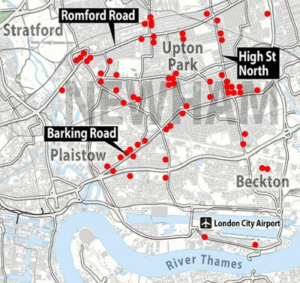 From a bookmaker’s point of view, the key to finding the best spot for a betting shop is to ensure that it’s going to be a profitable enterprise.
From a bookmaker’s point of view, the key to finding the best spot for a betting shop is to ensure that it’s going to be a profitable enterprise.
Like it or not, bookies are there to take money off punters and ensure that they remain in the black for the entirety of their existence. As a result, picking the best location for one of their shops is the most important thing.
When looking into different areas, there are a number of things that a bookmaker will have to consider.
They are as follows:
- Customer Demographics
- Proximity To Other Things
- Central Location
The first point is crucial because bookies rely on core customers who tend to visit regularly. According to the Competition & Markets Authority, around 75% of customers will go to the same bookmaker’s shop once a week at a minimum. Knowing who your target audience is is a crucial first part of selecting the right location for a shop.
Given that most people won’t specifically travel to go to a betting shop, owners of them need to make sure that they are located nice and centrally. On top of that, having them close to other things, such as a transport hub or pubs and bars, will ensure that there will be decent footfall. Having somewhere close that they can get a bite to eat or something to drink is also good.
Places With The Most and Least Shops Per Head
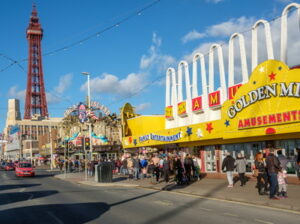 Though the sheer numbers of betting shops have dropped since the industry’s hey day, there are still around 8,000 bookmaker’s premises in the United Kingdom at the time of writing.
Though the sheer numbers of betting shops have dropped since the industry’s hey day, there are still around 8,000 bookmaker’s premises in the United Kingdom at the time of writing.
The vast majority of these are owned by the big chains, namely:
- William Hill
- Ladbrokes
- Coral
- Betfred
- Paddy Power
There are some smaller, independent bookies around, but they are becoming few and far between. Obviously given the vast numbers of bookmakers still in business it’s difficult to look at the location of every single one of them without this article becoming stupidly long. As a consequence, we’ll have a look at the areas that boast the most.
In order to get a sense of the sort of places that tend to have a number of bookmakers shops compared to those that don’t have very many, let’s have a look at the top ten town with the most shops per capita and the top ten that have the fewest:
| Most Bookies Per Capita | Fewest Bookies Per Capita |
|---|---|
| Aylesbury | Brentwood |
| Blackpool | Cambridge |
| Bootle | Hayes |
| Darlington | Hounslow |
| Grimsby | Ilford |
| Huddersfield | Luton |
| Oldham | Oxford |
| Pontefract | Rochdale |
| South Shields | Smethwick |
| Stockport | Southend-On-Sea |
Whilst the places in the left-hand column might seem mildly predictable, with poorer neighbourhoods such as Blackpool, Stockport and Grimsby on the list, it’s not as if the ones with the fewest bookmakers are all areas you’d naturally assume were well-off. Certainly the likes of Smethwick and Luton aren’t the most prosperous in the country.
That being said, only Aylesbury is further south than Leeds from the top ten places with the most bookmakers. Conversely, only Rochdale would be considered to be a northern location on the list with the fewest, whilst Smethwick is in the Midlands. There certainly does seem to be something of a north-south divide at play in the difference between the two lists.
The worst hit place is Grimsby, which has one bookmakers per 6,721 people. Compare that to Oxford, which has the fewest at one shop per 11,398 people, and you can see that the difference is stark. Is it evidence of bookmakers targeting areas of the country with a lower income? The average wage in Grimsby is £28,000 compared to £34,000 in Oxford.
Cities With The Most Betting Shops
| City | Number Of Betting Shops | Approximate Population |
|---|---|---|
| Birmingham | 73 | 1,000,000 |
| Liverpool | 81 | 550,000 |
| London | 813 | 8,900,000 |
| Manchester | 254 | 510,000 |
| Newcastle | 46 | 260,000 |
| Glasgow | 240 | 600,000 |
When you look at the major cities, it throws some interesting facts. The table above shows the big cities around the country and the number of betting shops in each:
It’s interesting to see that London and Manchester have the highest number of betting shops by some distance over the rest of the cities. It makes some sort of sense in London when you consider the number of people who live in the capital, but it’s less clear why Manchester has so many considering it has a smaller population than Liverpool.
It is a large city and numerous parts of it are rundown, which might help to explain the large numbers of bookmakers in the city. It’s also famous for its connection to sport, but then so is Liverpool. Perhaps the best explanation is the fact that Fred and Peter Done, the founders of Betfred, are from the Greater Manchester area.
Glasgow, meanwhile, is easily the worst hit city in Scotland. It is perhaps no surprise, then, that the city contains 26% of the country’s most deprived neighbourhoods. The 240 shops amount to one shop per 2,588 people, which is the United Kingdom’s highest concentration outside of London. The better-off areas of the city have the fewest betting shops.
Other Areas With A Lot Of Bookies
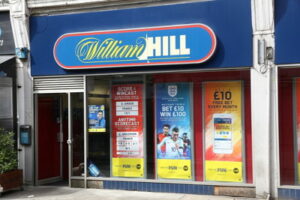 When it comes to bookmakers shops and their locations, the past can tell us a fair amount about where they’re located. In 2013, for example, there was a story on the BBC about a high street in Newham, East London that boasted 18 betting shops. That was at the height of the Fixed Odds Betting Terminals, which brought in £200,000 per bookmaker, per year.
When it comes to bookmakers shops and their locations, the past can tell us a fair amount about where they’re located. In 2013, for example, there was a story on the BBC about a high street in Newham, East London that boasted 18 betting shops. That was at the height of the Fixed Odds Betting Terminals, which brought in £200,000 per bookmaker, per year.
It was a rise in bookmakers of 25% since 2008 in the borough as a whole, with 82 bookmakers within the area. That was the equivalent of 6 bookies per square mile. At the time, Newham was third in a list of the most deprived areas in England, coming just ahead of Manchester and behind another London borough in the form of Hackney.
Considering that William Hill, the founder of the betting shop chain of the same name, said in 1956, “I don’t think it would be very nice to see at every street corner a betting shop”, you do wonder what he’d make of the prevalence of the venues in the modern day. In plenty of places there’s more than just one betting shop on every street.
In 2014 local councils were given more powers to stop high streets being entirely taken over by betting shops. They had the ability to refuse planning applications for bookmakers if they felt as though there were too many ‘clustered’ in one area. It was a notion countered by the Association Of British Bookmakers, who said that ‘no proliferation’ had taken place.
Quite how influential those new powers turned out to be is a matter of some debate. In May of 2020 the number of bookies present in Newham, for example, remained at 82. Whilst the vast majority of them are part of the massive chains, there are also a number of independent shops that help to make up the numbers.
Are Poor Areas Targeted?
The evidence thus far certainly seems to suggest that bookmakers are targeting poorer areas. This is a notion that is backed up by an article that appeared in the Daily Mirror in September of 2017.
Referring to a ‘national map of misery’, the article pointed to the fact that the areas in the United Kingdom that could ‘least afford to lose’ had the most betting shops.
Here are the figures that the article used to back up its point:
| Poor Area | Number Of Shops | Rich Area | Number Of Shops |
|---|---|---|---|
| Liverpool Riverside | 53 | Wirral West | 2 |
| Manchester Central | 50 | Broadland | 2 |
| Leeds Central | 40 | York Outer | 2 |
| Birmingham Ladywood | 38 | North Herefordshire | 2 |
| Slough | 30 | Henley-On-Thames | 0 |
It’s interesting to note that the better-off areas only have two bookmakers at most, whilst the poorer areas have as many as 53.
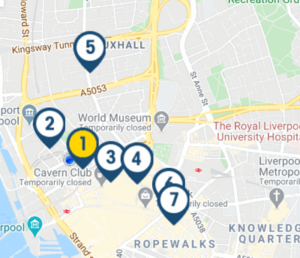 It certainly suggests that there’s a desire to target poorer areas and people that will perhaps wish to chase riches as there is unlikely to be a better way for them to make money in such large quantities.
It certainly suggests that there’s a desire to target poorer areas and people that will perhaps wish to chase riches as there is unlikely to be a better way for them to make money in such large quantities.
Again, these figures are from the days when Fixed Odds Betting Terminals were able to charge people as much as £100 per spin.
Since then, of course, the maximum stake has been reduced to £2 per spin and the machines will not be able to print money in the same manner for the bookies.
It will be interesting to check back in 2027 to see what the towns look like then.
The Image here shows William Hill shops in central Liverpool, it would take less than 10 minutes to walk between them all and this is just one company.
The Future Of Bookmakers In Towns & Cities
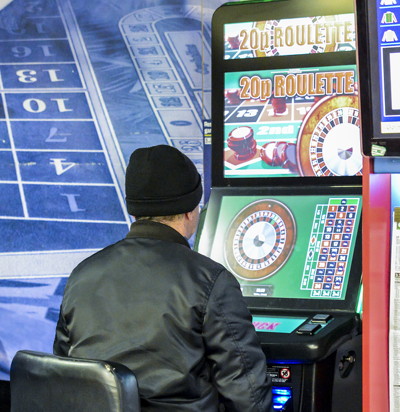 The Association Of British Bookmakers consistently responded to reports about the proliferation of betting shops by saying that the number has been relatively constant over the years. It’s quite evident that that’s not true, with the United Kingdom boasting more than 16,000 shops when the industry was at its peak, compared to around half that number nowadays.
The Association Of British Bookmakers consistently responded to reports about the proliferation of betting shops by saying that the number has been relatively constant over the years. It’s quite evident that that’s not true, with the United Kingdom boasting more than 16,000 shops when the industry was at its peak, compared to around half that number nowadays.
There have been several things that are likely to see a reduction in the number of bookies on our streets in the future. The most obvious one is the ever-increasing use of online services to place bets. The truth is that it is mainly an older demographic that tends to head to a bookmaker’s shop to place a bet, rather than using a website or mobile app.
As those older customers die out and betting online becomes more and more common, it’s difficult to see how that wouldn’t affect high street bookmakers. That is especially relevant in the wake of the government’s decision to limit the maximum stake on FOBTs, which will return their income in a big way as the maximum stake per spin drops by £98.
In July of 2019, for example, William Hill suggested that the company may need to close as many as a quarter of their betting shops in order to combat the losses they expected to suffer in the wake of the FOBT reform. That would be as many as 700 shops, which would take a huge chunk out of the 8,000 shops. Ladbrokes suggested they would shut 900 shops, with Betfred saying 500 of theirs might go.
Whilst the numbers aren’t great, the initial reaction of bookmakers to the news was that as many as half of bookmakers shops around the country might have had to be closed when the decision was taken to reduce their income via the machines that have been described as the ‘crack cocaine’ of gambling. The report that suggested that figure was quickly discredited.
Even so, by November of 2019 as many as four betting shops were shutting down every day. It came during a period that Fred Done described as leaving the industry members ‘fighting for their lives’ as the government declared ‘war’ on them. It’s no major surprise, of course, considering FOBTs were responsible for as much as 60% of a bookmaker shop’s profits.
Meanwhile the global pandemic that hit in 2020 also left bookies short of revenue. Losses of as much as 57% of profits during a seven week period left many considering whether more shops would need to be closed moving forward. William Hill claimed that the company was losing £15 million a week whilst the shops were shut as part of social distancing measures.